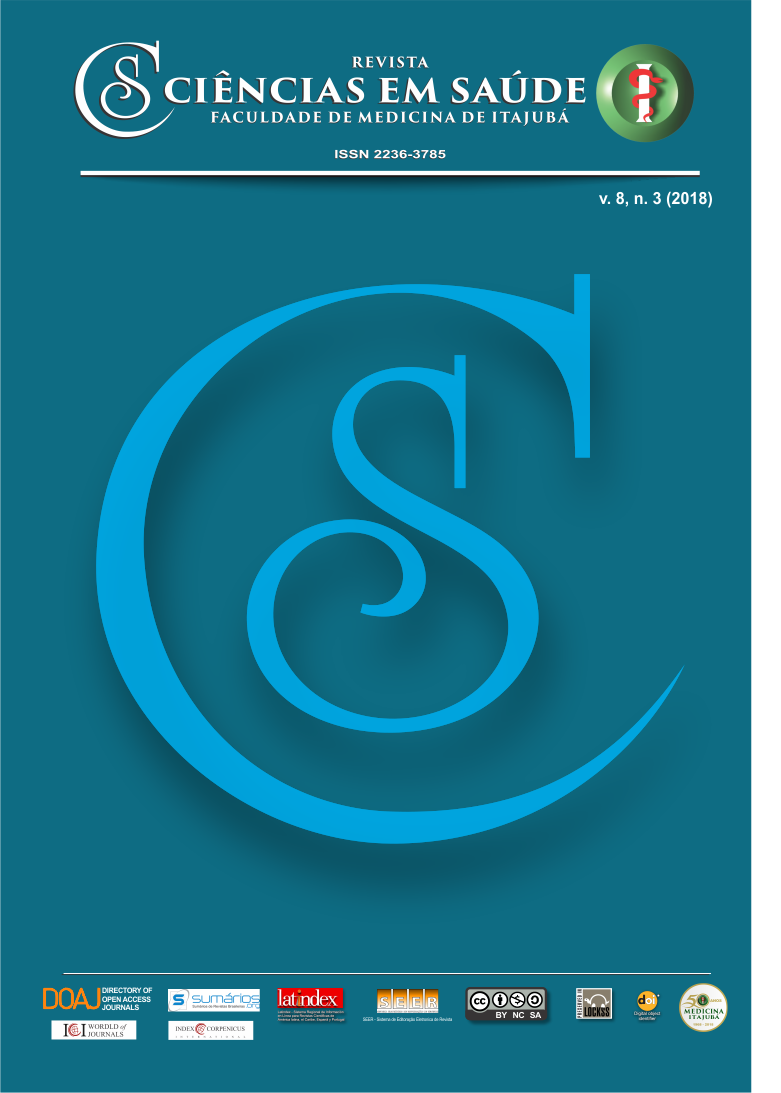Perfil epidemiológico e análise clínica de pacientes com pneumonia associada à ventilação mecânica em um hospital de ensino / Epidemiological profile and clinical analysis of patients with ventilation associated pneumonia in a teaching hospital
Main Article Content
Abstract
Introdução: A pneumonia associada à ventilação mecânica (PAV) é definida como aquela que se desenvolve 48h após o início da ventilação mecânica. O mecanismo comumente envolvido é a aspiração para as vias aéreas inferiores de secreções colonizadas. O diagnóstico de PAV pode ser clínico ou microbiológico. A PAV prolonga o tempo de internação e aumenta custos. Seu tratamento precoce e adequado está associado à redução da mortalidade. Objetivos: Traçar o perfil epidemiológico e realizar a análise clínica de pacientes diagnosticados com PAV, comparando o grupo de pacientes com diagnóstico clínico e os com diagnóstico microbiológico. Métodos: Foram avaliados 62 prontuários eletrônicos de pacientes diagnosticados com PAV no período de janeiro de 2015 a janeiro de 2017 no Hospital Escola de Itajubá (MG), de acordo com o banco de dados da Comissão de Controle de Infecção Hospitalar. Os dados coletados incluíram: idade; sexo; presença de febre; resultado da cultura; desfecho; causa do óbito; uso de antibiótico; tempo de internação; valores de leucócitos e proteína C-reativa (PCR). Resultados: Foram analisados 49 pacientes através de prontuários eletrônicos, com idade média de 60,5 anos, sendo 71,4% do sexo masculino. Quase 70,0% do total de casos de PAV teve diagnóstico microbiológico definido. O agente mais envolvido foi o Acinetobacter baumannii. A mortalidade foi de 55,0%. PCR estava elevada em quase 100,0% dos casos; febre esteve presente em 45,0% dos casos e leucocitose, em 70,0%. Conclusão: A PAV é frequente em unidades de terapia intensiva. Os agentes mais prevalentes são os gram-negativos e multirresistentes.
Palavras-Chave: Pneumonia associada à ventilação mecânica; Infecção hospitalar; Intubação intratraqueal
ABSTRACT
Introduction: Ventilation associated pneumonia (VAP) is defined as one which takes place 48 hours after the onset of mechanical ventilation. The mechanism commonly involved in the etiology is the aspiration of contaminated secretions into the lower airways. VAP diagnosis may be clinical or microbiological. VAP extends the hospitalization period and therefore its cost; early and appropriate treatment of VAP is associated with an expressive decrease of mortality. Aims: To identify the epidemiological profile, to perform clinical analysis of VAP diagnosed by comparing the group of patients with clinical diagnosis and those with a microbiological diagnosis. Methods: Sixty-two electronic medical records of patients diagnosed with VAP were evaluated from January 2015 to January 2017 at a Teaching Hospital, according to the Hospital Infection Control Committee database. Data collected included: age; sex; presence of fever; culture result; outcome; cause of death; use of antibiotic; leukocyte values and C-reactive protein (CRP). Results: Forty-nine patients were analyzed using electronic medical records, with a mean age of 60.5 years, of which 71.4% were male. Almost 70.0% of the total VAP had a definite microbiological diagnosis. The most involved agent was Acinetobacter Baumannii. Mortality was 55.0%. CRP was elevated in almost 100.0% of cases; fever was present in 45.0% of cases and leukocytosis in 70.0%. Conclusion: VAP is frequent in intensive care units. The most prevalent are the gram-negative and the multiresistant agents.
Keywords: Ventilation associated pneumonia; Hospital infection; Endotracheal intubation
Article Details
Authors maintain copyright and grant the HSJ the right to first publication. From 2024, the publications wiil be licensed under Attribution 4.0 International 
 , allowing their sharing, recognizing the authorship and initial publication in this journal.
, allowing their sharing, recognizing the authorship and initial publication in this journal.
Authors are authorized to assume additional contracts separately for the non-exclusive distribution of the version of the work published in this journal (e.g., publishing in an institutional repository or as a book chapter), with acknowledgment of authorship and initial publication in this journal.
Authors are encouraged to publish and distribute their work online (e.g., in institutional repositories or on their personal page) at any point after the editorial process.
Also, the AUTHOR is informed and consents that the HSJ can incorporate his article into existing or future scientific databases and indexers, under the conditions defined by the latter at all times, which will involve, at least, the possibility that the holders of these databases can perform the following actions on the article.

